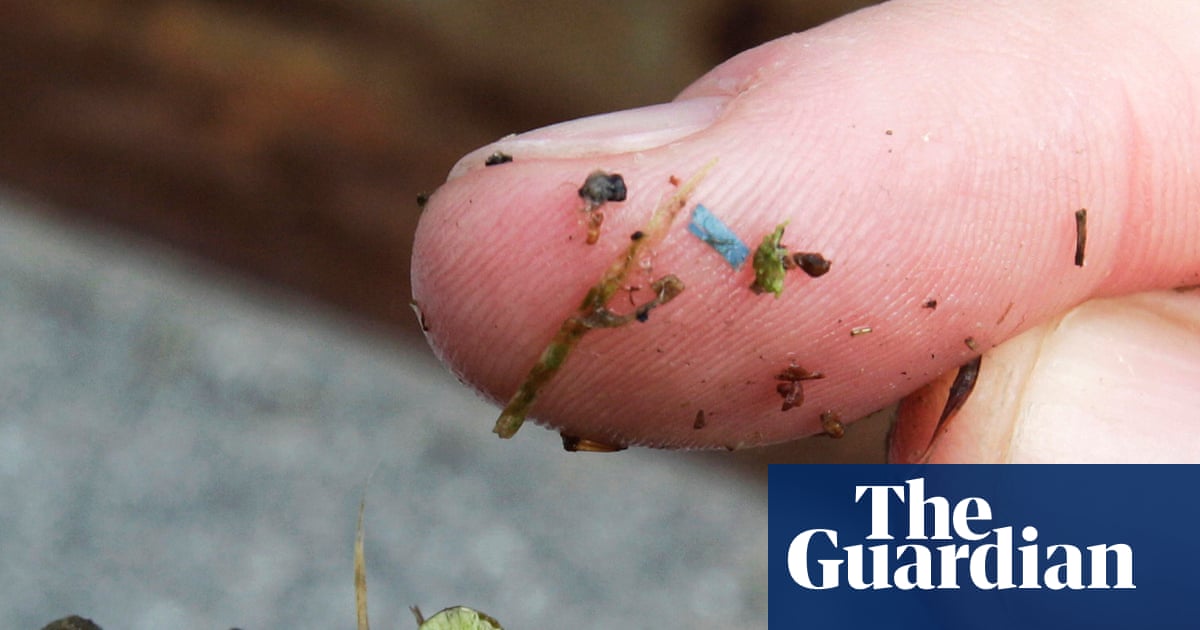Twenty-four brain samples collected in early 2024 measured on average about 0.5% plastic by weight
A growing body of scientific evidence shows that microplastics are accumulating in critical human organs, including the brain, leading researchers to call for more urgent actions to rein in plastic pollution.
Studies have detected tiny shards and specks of plastics in human lungs, placentas, reproductive organs, livers, kidneys, knee and elbow joints, blood vessels and bone marrow.
Given the research findings, “it is now imperative to declare a global emergency” to deal with plastic pollution, said Sedat Gündoğdu, who studies microplastics at Cukurova University in Turkey.
There is one small thing that slightly moderates my frustration over this one: Being rich is not particularly good protection against microplastic contamination. It’s so ubiquitous and went undetected for so many years that even Bezos and Zuckerberg probably have plenty in their systems.
1000 percent.
And the sheeple who listen to voices promoting “clean/raw” diets.
In 2024 It’s impossible not to eat something with some sort contamination, because they constantly fuck up the planet.
deleted by creator
Hopefully they have the most from all those factory tours they would have gone on too.
That’s cool and all, but they have access to cutting edge treatments for any ailments resulting from this while the vast majority of everyone else on the planet does not despite contributing heavily to the issue.
So… my brain is partially synthetic then?
We’ll achieve the singularity soon
At least my balls are safe
Every human testicle contained microplastics in a new study
Darn
What are the main sources? Just, waves at everything or plastic lined drink containers or something?
Apparently rubber from tires is one of the biggest sources.
Textiles are a big contributor, because the plastic fibers are already really small and relatively weak to begin with. You can talk about how many pieces a disposable bag might shed, but it’s nothing compared to just putting a polyester T-shirt in the washing machine.
Especially microfiber. It was shown to shed the most fibers of all the plastic-based textiles.
It all rouses this uncanny experience in me that is adjacent to gross, but not the same. “Gross,” to me, connects to disgust, one of our primal affects; and these affects were develop for an organic world. But this intrusion of synthetic materials everywhere around us (and in us) is disturbing in another sort of way.
My understanding is that it stems from various combinations of plastic trash, contaminating our ecosystem. So a plastic lined container (nearly any disposable container) is bad because it will contain microplastics in its conents, and also, as it degrades in the trash, will release more microplastics.
It’s just funny how we were looking for degradable plastics for years so we don’t have to burn it, just to find out the degraded plastic particles are the real problem, and burning it was actually the less unhealthy option.
I mean we’re still not certain if that’s true. We know that plastic is now everywhere because degradation, but I don’t think we know how damaging it is, if at all (i doubt its non damaging but who knows) In addition, burning could still be worse. Time will tell
Sounds like we need free healthcare on the plastics industry dime.
I’m still waiting on my check from the oil industry releasing lead into the air or DuPont poisoning our drinking water with chemicals.
If we pooled money from all the horrible things corporations did to us, we’d be set for generations.
I assume the general response to this from our global leadership will be a mix of…
A. This is X countries problem to deal with!
B. Who cares I’ll be dead before this effects me personally.
Who cares I’ll be dead before this effects me personally
You’re not wrong. Average age of a Senator is 64. Meanwhile, the life expectancy for a white guy in the US is 73 – meaning they have 9 years left in them.
Alzheimers is thought to be caused in part by the buildup of amyloid plaques. That is, misfolded proteins (prions) and other bio gunk that clogs up synapses. Now with evidence showing microplastics are crossing the blood brain barrier, we can expect an exacerbation of alzheimers and it’s symptoms. More and more people will be wracked with dementia at increasingly earlier stages of life.
we’re destroying ourselves and our environment at roughly the same rate, and if you’ve paid any attention to how the environment is doing, you’ll know that that rate is terrifying, and rising unabated.
Interesting (and terrifying) that microplastics could get past the blood-brain barrier. I’m wondering if it’s because newly developed tissue incorporates contaminants and so the plastic was there since the brain developed, rather than it infiltrating the brain over time. Then we could at least say that the contamination won’t get worse once you’re an adult. But the tissue samples being 1/200th plastic - which is insane - doesn’t inspire much hope.
Has there been a single place where microplastic contamination hasn’t been found yet? I’m hoping the best possible timeline occurs and all these studies end up retracted due to the plastic contamination happening during the sample preparation/testing process or something, rather than us actually being that screwed.






